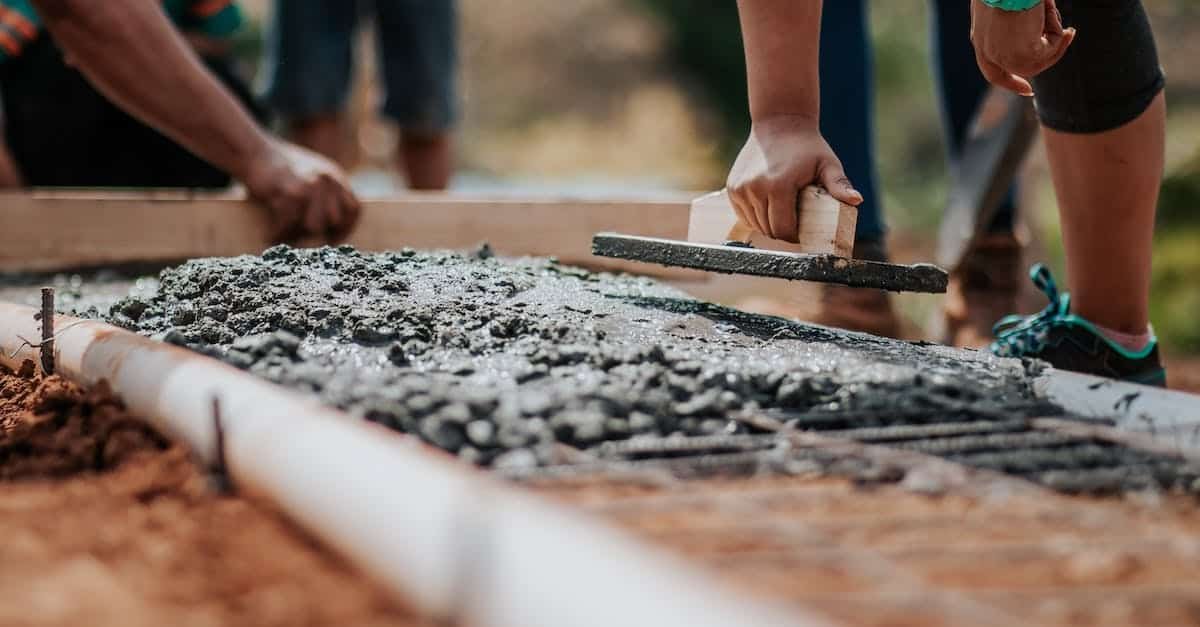Whether you’re a seasoned DIY enthusiast or just starting out, having the right workbench can make all the difference in your projects. But should you build one tailored to your needs or invest in a pre-made model?
In this guide, you’ll explore the basics of workbenches, weighing the pros and cons of building versus buying. We’ll help you determine which option aligns best with your workspace, budget, and specific requirements. Let’s dive in and find the perfect foundation for your creative endeavors.
Understanding Workbench Basics
Your workbench is the cornerstone of your woodworking projects, providing a stable surface for building, assembling, and finishing. Understanding its purpose and essential features ensures you select the right one for your garage shop.
Purpose and Uses
Your workbench supports tasks like cutting, sanding, assembling, and finishing wood furniture. It serves as a foundation for building tables, chairs, and cabinets. A well-equipped workbench enhances efficiency by organizing tools, materials, and projects effectively.
Essential Features
Choose a workbench with a durable surface, ample workspace, and integrated storage. Opt for hardwood or metal tops to withstand heavy use and resist wear. Ensure adequate size to handle large projects such as cabinets and tables. Incorporate storage solutions like shelves, drawers, and tool racks to keep essentials like saws, drills, and clamps within reach. Additional features like built-in vises, adjustable heights, and electrical outlets can boost functionality for diverse woodworking activities.
Building Your Own Workbench
Crafting a custom workbench elevates your woodworking projects by providing a workspace tailored to your needs. It ensures stability and efficiency for all your tasks.
Customization Options
Choose features that enhance your workflow, such as integrated tool storage and adjustable heights. Incorporate built-in vises for secure holding and add extendable sections for larger projects.
Materials and Tools Needed
Select durable materials like 4×4 lumber, plywood sheets, and high-strength screws. Equip your garage shop with a table saw, drill, clamps, measuring tape, and a level to ensure accurate construction.
Buying a Ready-Made Workbench
Purchasing a pre-made workbench offers convenience and immediate functionality for your woodworking projects.
Available Types
Ready-made workbenches come in various styles to suit different needs:
- Standard Workbenches: Provide a sturdy surface for general tasks with minimal features.
- Assembly Tables: Feature larger surfaces and integrated storage for assembling projects.
- Vise-Integrated Workbenches: Include built-in vises for securely holding materials during cutting and drilling.
- Portable Workbenches: Designed with mobility in mind, featuring lightweight materials and foldable designs.
- Heavy-Duty Workbenches: Built with reinforced materials to handle heavy tools and large projects.
Pros and Cons
Buying a ready-made workbench has its advantages and disadvantages:
Pros:
- Immediate Availability: Start your projects right away without waiting for construction.
- Consistent Quality: Manufactured to meet specific standards, ensuring durability.
- Warranty and Support: Often come with manufacturer warranties and customer support.
- Variety of Options: Choose from different styles and features to match your needs.
- Higher Cost: Pre-made workbenches can be more expensive than building your own.
- Limited Customization: May not perfectly fit your workspace or specific requirements.
- Standard Sizes: Fixed dimensions might not suit all projects or workshop layouts.
- Material Constraints: Availability of materials may vary, affecting durability and appearance.
Key Factors to Consider
When choosing a workbench, evaluate key aspects to ensure it meets your woodworking needs.
Budget
Determine your budget before deciding to build or buy. Pre-made workbenches range from $100 to $1,000, offering various features and materials. Building your own can cost between $200 and $500, depending on materials and tools required. Assess your financial constraints and compare costs to find the best option for your projects.
Space Requirements
Measure your workshop space to select an appropriately sized workbench. Standard workbenches typically measure 24 inches deep by 48 inches wide, fitting most garage shops. If space is limited, consider compact or foldable models that maximize efficiency. Ensure the workbench height aligns with your ergonomic needs to maintain comfort during extended use.
Durability
Choose a workbench made from durable materials like hardwood or heavy-duty plywood. Ensure it can support the weight of tools and projects, typically up to 500 pounds. Look for features such as reinforced joints and solid construction to enhance longevity. A sturdy workbench withstands daily use and provides a reliable surface for all your woodworking tasks.
Cost Comparison: Building vs Buying
Choosing between building or buying a workbench involves evaluating your budget and long-term needs. Here’s a breakdown to help you decide.
Initial Investment
Building a workbench generally costs between $200 and $500, depending on materials and tools required. Buying a pre-made workbench ranges from $100 to $1,000, offering various options to fit different budgets.
| Option | Cost Range |
|---|---|
| Building | $200 – $500 |
| Buying | $100 – $1,000 |
Long-Term Value
A custom-built workbench offers tailored features and durability, enhancing your workshop’s functionality over time. Pre-made workbenches provide immediate use and consistent quality, though they may lack the personalized aspects of a built option.
Conclusion
Choosing the right workbench is all about what fits your unique workflow and space. Whether you decide to build a custom bench that perfectly matches your needs or opt for the convenience of a pre-made one, having a reliable workspace can make all the difference in your projects.
Trust your instincts and consider what matters most to you in your workshop. With the right workbench by your side you’re set to take on any project with confidence and ease
Frequently Asked Questions
What should I consider when choosing a workbench for my DIY projects?
When selecting a workbench, consider durability, workspace size, and integrated storage solutions. Ensure the workbench is sturdy enough to handle various tasks like cutting and sanding. Measure your workshop space to choose an appropriate size and look for features like built-in vises or adjustable heights that enhance efficiency and organization.
Should I build a custom workbench or buy a pre-made one?
Choosing between building a custom workbench and buying a pre-made one depends on your specific needs, budget, and available time. Building allows for tailored features and better customization, while pre-made workbenches offer convenience, immediate use, and consistent quality. Assess your priorities to decide which option best suits your workshop.
What are the benefits of building my own workbench?
Building your own workbench offers customization to fit your specific needs, ensuring stability and efficiency. You can integrate tool storage, adjustable heights, built-in vises, and extendable sections. Additionally, constructing your own bench allows you to choose durable materials and tailor the design to enhance your woodworking projects.
How much does it cost to build a workbench compared to buying one?
Building a workbench typically costs between $200 and $500, depending on materials and tools used. In contrast, pre-made workbenches range from $100 to $1,000. Building offers long-term value with tailored features, while buying provides immediate functionality and a variety of options to fit different budgets.
What materials are best for constructing a durable workbench?
Using durable materials like 4×4 lumber and plywood is recommended for building a sturdy workbench. These materials provide strength and stability, essential for supporting heavy tasks. Additionally, reinforced joints and solid construction techniques enhance the longevity and reliability of your workbench.
What tools are needed to build a workbench?
Essential tools for building a workbench include a table saw, drill, clamps, measuring tape, and a level. These tools ensure accurate measurements and secure assembly, helping you create a stable and functional workbench tailored to your needs.
What are the advantages of buying a pre-made workbench?
Pre-made workbenches offer immediate availability and consistent quality. They come with warranties and support, providing peace of mind. Additionally, a variety of options are available to suit different needs, whether you require a portable bench, one with integrated vises, or a heavy-duty model for larger projects.
What are the drawbacks of purchasing a pre-made workbench?
The main drawbacks of pre-made workbenches include higher costs, limited customization, and standard sizes that may not fit all projects. They may also have material constraints, limiting their adaptability to specific workshop requirements. These factors can make pre-made options less ideal for those needing specialized features.
How do I determine the right size for my workbench?
To determine the right size for your workbench, measure your workshop space and consider the types of projects you’ll undertake. Ensure the workbench height aligns with ergonomic needs to prevent strain. A well-sized bench provides ample workspace and fits comfortably within your available area, enhancing overall workshop efficiency.
Is a custom-built workbench worth the investment?
A custom-built workbench is worth the investment if you need tailored features and enhanced durability. It offers a workspace designed to your specific requirements, improving functionality and efficiency. While the initial cost may be higher, the long-term benefits of a personalized and sturdy workbench can significantly enhance your woodworking experience.




